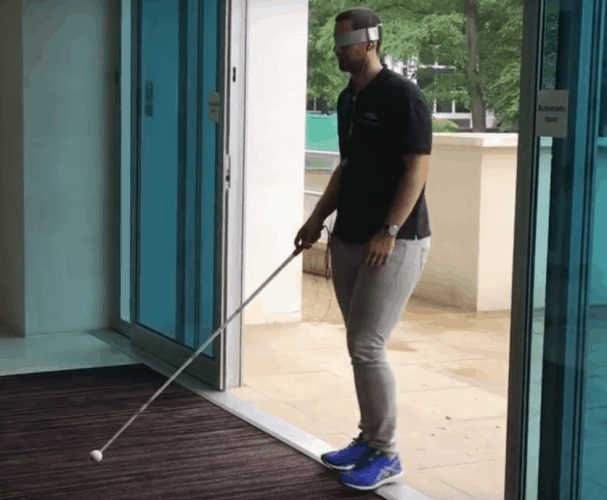A PhD student at Manchester University is developing a white cane with embedded sensors that alerts visually impaired users to their surroundings.

mySmartCane is the brainchild of Vasileios Tsormpatzoudis, from the University’s School of Electrical and Electronic Engineering. The prototype tool uses a low-cost embedded computer that functions in a similar way to a car parking sensor. An ultrasonic ball wirelessly measures the distance to approaching objects, converting the information into an audio signal. Variations in the frequency of the sound allow users to gauge their distance from an object.
“mySmartCane allows visually impaired people to sense their environment beyond the physical length of their cane,” said Vasileios, who is researching energy storage and power network integration at Manchester.
“The user is alerted to approaching objects using gentle audio, rather than waiting for the cane to physically bump into the object. Navigation is therefore easier and much faster.”
Vasileios was inspired to develop the cane after watching his mother struggle with retinis pigmentosa, a hereditary eye disorder that affects vision.
“I have seen first-hand the struggle visually impaired people have to put up with when they try to navigate with the traditional white cane,” he said.
“In preparation for the project, I conducted many conversations with existing white cane users. The key takeaway was that my modernised white-cane had to be as simple and low-cost, so I used 3D printing and cheap sensors to create an ultrasonic sensory ball, which attaches to the bottom of most existing white-canes.”
Sound can be communicated to the user via a single earpiece or a pair of bone-conducting headphones, with the latter enabling people to hear sounds from the external environment as well as from the cane. According to Vasileios, mySmartCane is still at an early stage of development, and there are several areas where the prototype could be improved.
“I do have many ideas to refine the design further,” he said. “For example, I want to add an additional sensor to detect overhead obstacles such as sign-posts or doorways which could cause injury and are impossible to detect with a normal white cane. Another innovation could be using vibration rather sound.”




Nanogenerator consumes CO2 to generate electricity
Whoopee, they've solved how to keep a light on but not a lot else.